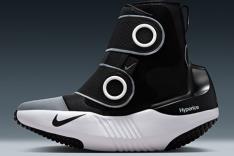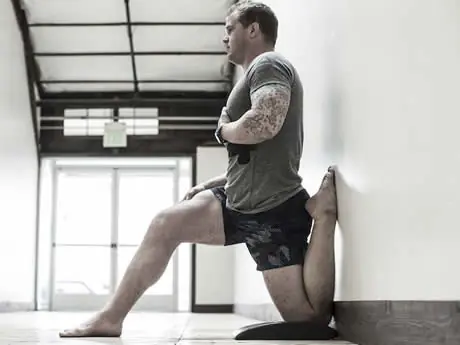
In a fascinating analysis of the world of ultra-runners published a 2013 issue of the Journal of Strength and Conditioning, researchers collected data showing those new to the running world apparently aren't that intimidated by the notion of racing longer than the standard marathon distance, like the 50k, the 50-mile, the 100k and beyond. At least less intimidated than they used to be, according to a new study on ultra-runners published in the November issue.
Either less intimidated or more impatient. Data collected by the researchers indicated that one out of four newcomers to ultramarathon race distances with 3 or less years of running under their belt. Age itself doesn't do much to shut ultra-runners down. In fact, the study showed that those logging the highest volume levels, as well as the most races, are the oldest in the ultra community.
More: Mark Allen's 12 Best Strengthening Exercises
But if aging alone doesn't shut down an ultra runner, the mileage might. Another observation put forward by the California-based research team was that the most common reason ultra-runners quit the sport was because of injury:
Among the former ultramarathon runners, running injuries represented the most common reason for discontinuation of regular running or for deciding to not run ultramarathons in the future. These findings demonstrate the adverse impact of running injuries on the sustainability of ultramarathon running.
It's fair to say that a similar pattern exists in long-distance triathlon. The awe of watching the Hawaii Ironman on TV tends to inspire non-triathletes into joining up, often with the Ironman goal being a driving force. With Ironmans accessible around the globe, and things like charity training programs promising to get newbies to the finish line, the pathway is easily enabled.
But both new triathletes and veteran triathletes face the dreaded treadmill of injuries that can occur. Indeed, one of the things confronting triathletes in terms of the risk of chronic injury is the heavy number of "duty cycles" involved with each discipline. Without any form of ancillary training to help counter the impact stress and repetitive nature of running, for example, an athlete tends become ripe for range of motion limitations, strength imbalances and the kinds of injuries that make a physical therapy office hum with business: runner's knee, iliotibial band syndrome, achilles tendon problems, hip pain and such. Perhaps to a less degree, the same can be said for swimming and cycling. Both of these disciplines can serve up their fair share of nagging pains thanks to the month-after-month onslaught of duty cycles that training demands.
More: How to Avoid Injury and Illness
The weight room is often suggested as an antidote of sorts—to break a triathlete out of some of these patterns and to also build strength and elasticity in the tissues. But time can be a big problem—lacing a triathlon schedule through work and family obligations is overwhelming enough without trying to jam a trip to 24-Hour Fitness into it all.
Yet even the time-strapped triathlete can find time for a functional movement fix, says Chris Jordan, the director of exercise physiology at the Human Performance Institute. Jordan's work has garnered a lot of national attention since his ACSM article hit the press. Citing research that shows that short, high-intensity bouts of circuit training using bodyweight can stimulate gains in the strength of the body's major muscle groups as well as provide positive jolt to cardiovascular endurance. All without adding to the collective pounding that a standard running program delivers.
he HPI focuses on solving problems for professionals who have time-stressed schedules, but who want the health, fitness and performance benefits that exercise produces.
In the ACSM study, Jordan provides a sample circuit workout now commonly referred to as "The 7-Minute Workout"—a workout you can do just about anywhere with very little time. The collection of movements are meant to be performed with no more rest than is required to change stations. To do the workout, start off with 30 seconds of as many jumping jacks as you can, than transition to the wall-sit for 30 seconds, then 30 seconds of pushups. And so on. Jordan says you can do the circuit several times over if your fitness (and time) allow for it.
More: 4 Great 1-Hour Bike Workouts
1. Jumping jacks
2. Wall sit
3. Push-up
4. Abdominal crunch
5. Step-up onto chair
6. Squat Lower body
7. Triceps dip on chair
8. Plank hold
9. High knees/running in place
10. Lunge
11. Push-up and rotation
12. Side plank
"The strong joints and muscles that you get from functional movement exercises are a good thing for distance runners," Jordan said in a phone interview. "It can help you develop muscles that can better withstand pounding on the pavement."
In other words, a triathlete or runner may be able to supplant a weekly aerobic run, swim or ride with a workout like the 7-minute workout and not lose anything in the deal, as far as aerobic fitness, and gain both strength work and reduce the onslaught of pounding.
For those newbies wanting to work their way into the Ironman world, this strategy might help them enjoy not only meet their initial goals, as well as invest in a nice performance booster, but enjoy the sport a longer amount of time.
More: 6 Core Exercises That'll Make You a Better Triathlete
 Sign up for your next race.
Sign up for your next race.









Discuss This Article